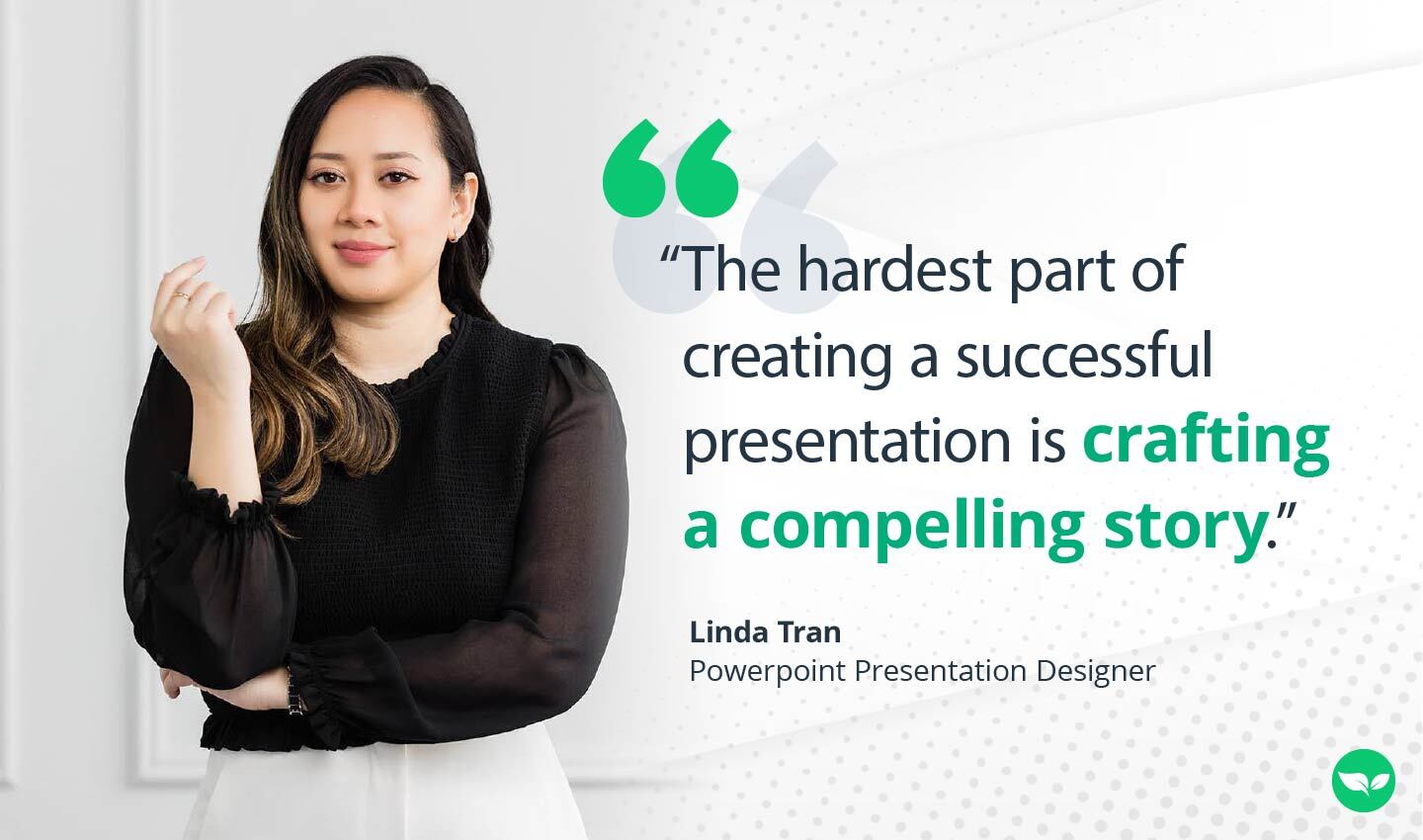She Made $87K Her First Year — Her Niche? PowerPoint Presentations
Most designers chase logos and brand kits. Linda Tran took a different route—PowerPoint. In just two years, she turned pitch decks into a multi–six-figure business.
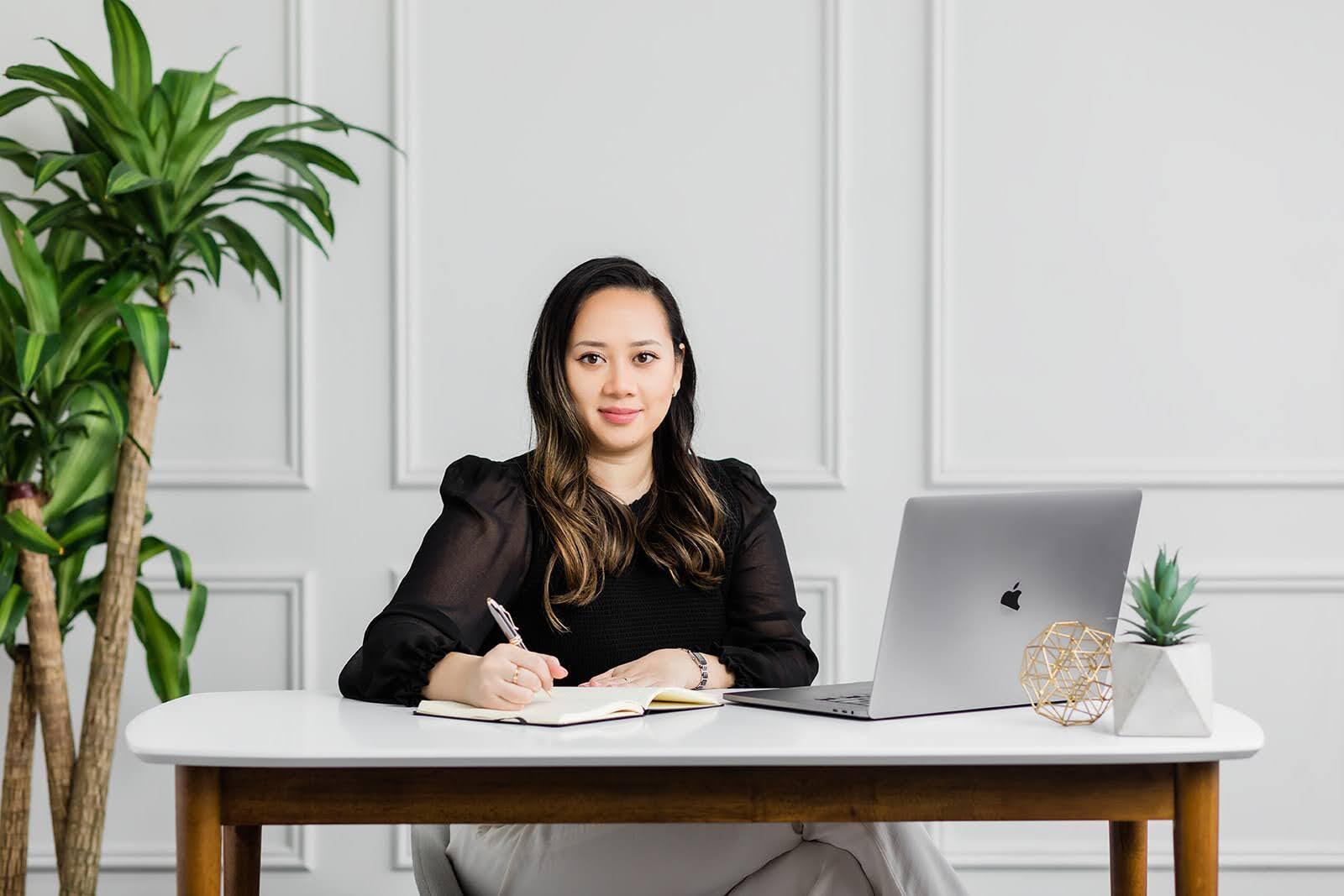
Linda Tran had been working as a graphic designer in the corporate world long enough to know when a conversation wasn’t going anywhere.
She’d asked for a raise. Then asked again. Nothing.
💰 Revenue: Multi–six figures per year
🗓️ Started: 2022
Featured Quote:
“Clients don’t hire me to make things pretty — they hire me to make slides that get yeses.”
“It was very frustrating,” she said. “Knowing that someone else was dictating my future.”
So in 2022, she stopped waiting. She put $500 into a Google ad, leaned into the kind of design work she used to do on the side, and started taking freelance clients from her apartment in Toronto.
Not logos. Not full brand packages. PowerPoint presentations.
That first year, she earned $87,000. By the following year, she’d hit six figures. Today, her calendar books up weeks in advance — and she’s built a business around something most designers overlook: good old-fashioned slide decks.
A Google Ad, One Client, and a Path She Didn’t Expect
Tran had freelanced before. A logo here, a favor there. Friends, acquaintances — whoever asked. But it never added up to more than side income.
“There was just too much competition,” she said. “I couldn’t stand out from all the noise.”
In early 2022, she tried something different. She took $500 and ran a Google ad — just a short one, aimed at people looking for help with pitch decks and business presentations. No fancy funnel. No perfect website.
One week later, someone reached out.
That first client paid for the ad. Then they came back for another project. Even after they changed companies, they kept hiring her.
That was enough to convince her. She didn’t need to chase logos or compete with every other designer on Instagram. There was demand — real, ongoing demand — for clean, well-designed presentations that made her clients look sharp.
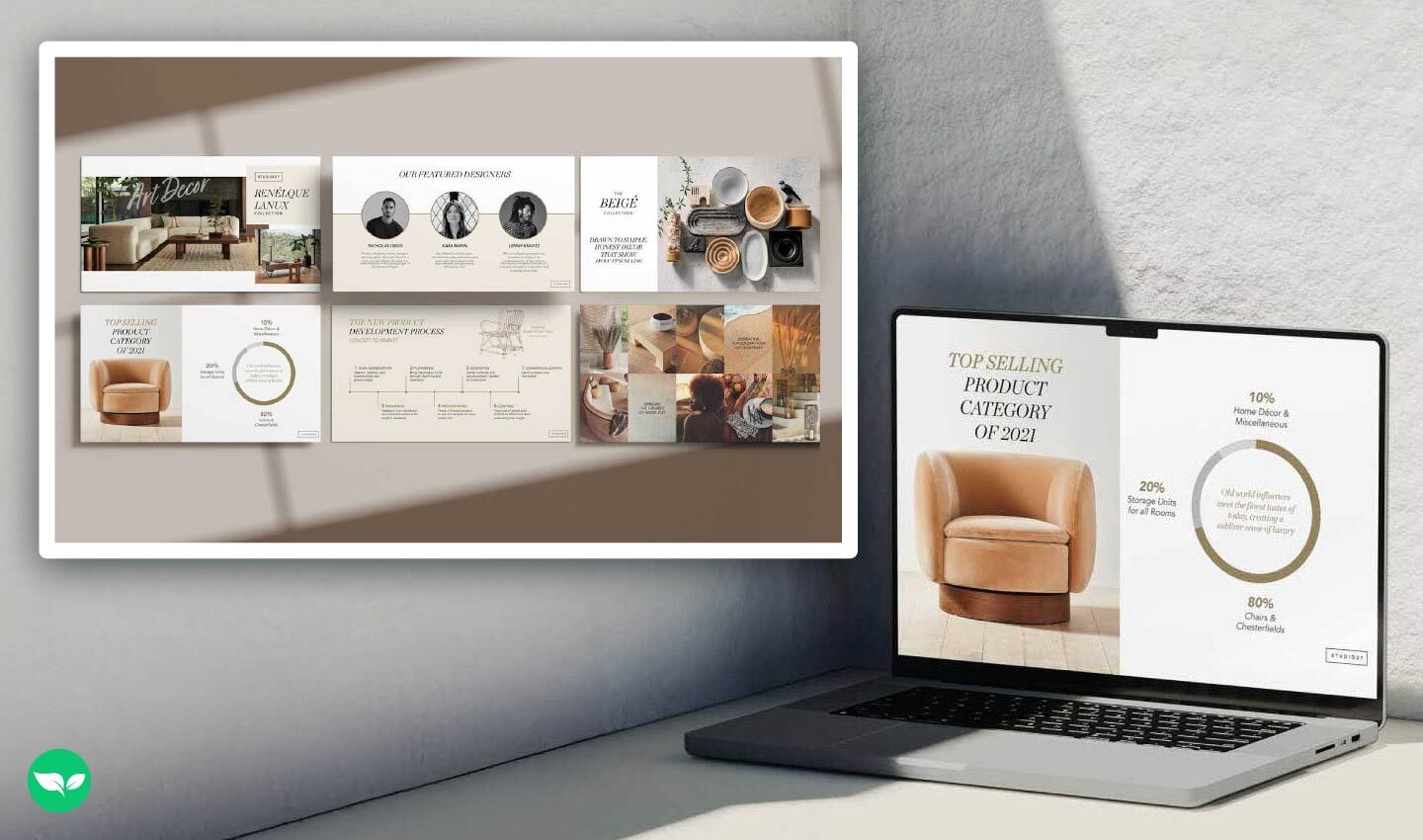
Better yet, those jobs were easier to scope and faster to deliver. No brand discovery sessions, no endless rounds of color tweaks. Just focused work with a clear end goal.
So she leaned in. Presentations became her niche. Clients needed them every week — and she was ready to fill that gap.
Related: How to Become a Graphic Designer
The Power of a Narrow Niche
In the beginning, Tran didn’t have a plan. Not really. No polished onboarding process. No pre-built packages. She was figuring it out as she went.
“I didn’t know what clients were willing to pay,” she said. “I just wanted to offer something that felt fair.”
So she tested her rates. Raised them a little. Waited to see how people responded. Then raised them again.
By year two, her prices were up 40% — and her income had climbed into multi–six figures. And instead of scaring people off, it had the opposite effect — clients started booking her in advance. Some reserved time a month out just to make sure they’d get a spot.
“Some people need help every single week,” she said.
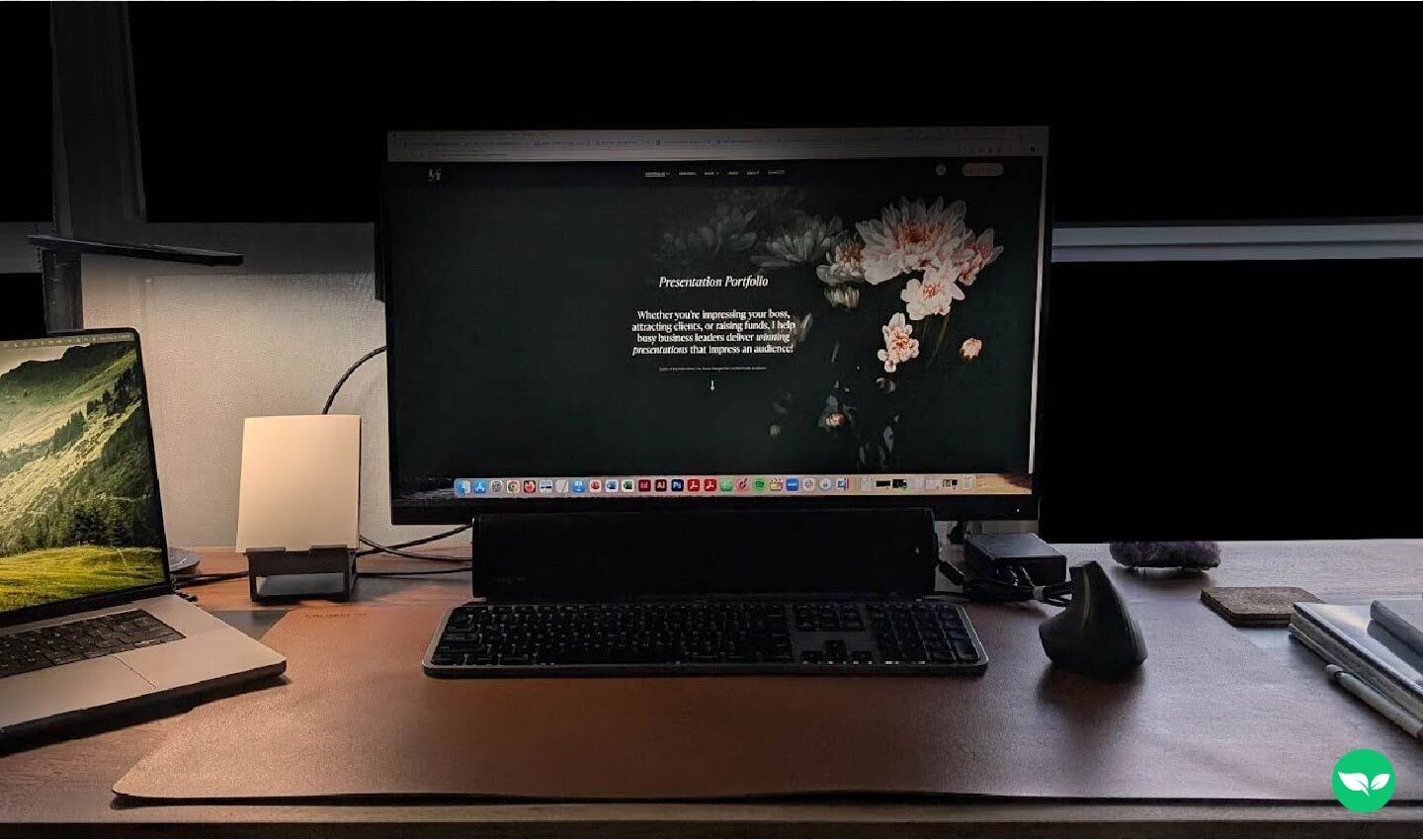
The work wasn’t flashy, but it mattered. Her clients weren’t looking for “cool.” They were pitching to boards, raising money, presenting to stakeholders. They needed to look professional. And every slide had to work.
That pressure turned out to be an advantage. It helped her streamline her process, set expectations, and become the go-to person for one very specific thing.
And because her niche was so clear, she didn’t have to pitch herself constantly. People found her. Most of her new clients still come in through LinkedIn — either from her profile, her content, or a referral from someone she’s worked with before.
Related: 21 Low-Cost or Free Small Business Marketing Ideas
What She Wishes She Knew Sooner
When Linda first started freelancing, she figured the hard part would be landing clients. It wasn’t.
“I knew how to design,” she said. “What I didn’t know was how to price, scope a project, manage feedback, or keep track of invoices. That part hit me fast.”
She made it work — Googling contract templates, tweaking her pricing after each job, saying yes more than she should’ve. But looking back, she said most of her early stress came down to a lack of structure. “I didn’t need to know everything,” she said. “I just needed a system.”
One of the best decisions she made early on? Hiring a lawyer to create her service agreement. “At first, I used something I found online. But eventually I had a professional write one up. You only need to do it once — it’s worth it.” Now, every new client signs that agreement and pays a deposit before work begins.
That’s what she’d tell other designers thinking about going out on their own: You don’t need to be perfect — just prepared. A few smart systems early on can save you from weeks of chaos later.
💡 Linda’s Advice for Designers Going Solo
- Niche faster than feels comfortable. “I thought I had to do everything — logos, branding, websites — just to survive. The truth is, clarity sells.”
- Be crystal clear about who you help. “Don’t just say ‘graphic designer.’ Say who you serve and what you help them accomplish.”
- Guard your calendar. Linda now turns away urgent projects unless she knows the client. “If someone emails on Friday and needs it Monday, that’s not my client.”
- Don’t wait for a perfect website. Her first leads came from a Google ad and a polished LinkedIn page — no portfolio needed.
- Value isn’t about aesthetics. “Clients don’t hire me to make things pretty,” she said. “They hire me to make slides that get yeses.”
- Build rebookability into your offer. Clean file handoffs, fast turnarounds, and a calm process keep clients coming back — and booking in advance.
- Start with real agreements. “You don’t need a fancy legal team,” she said. “Just a proper service contract that protects you and your client.”
Related: How to Start a Business in 9 Simple Steps
Looking Ahead: What’s Next for Linda
Today, Linda’s booked weeks out and turns down more work than she accepts. Most of her clients find her through Google or LinkedIn — no cold emails, no outbound hustle. “People come to me when the stakes are high,” she said. “They’re trying to land funding or convince a board. They don’t want cute slides. They want clear, persuasive ones.”
But she’s not coasting.
She’s been shifting more of her workflow into repeatable systems — using templates, onboarding forms, and project frameworks to streamline everything from kickoff to handoff. “It protects my energy,” she said. “Not every designer thinks about that, but it matters. It keeps me sharp creatively.”
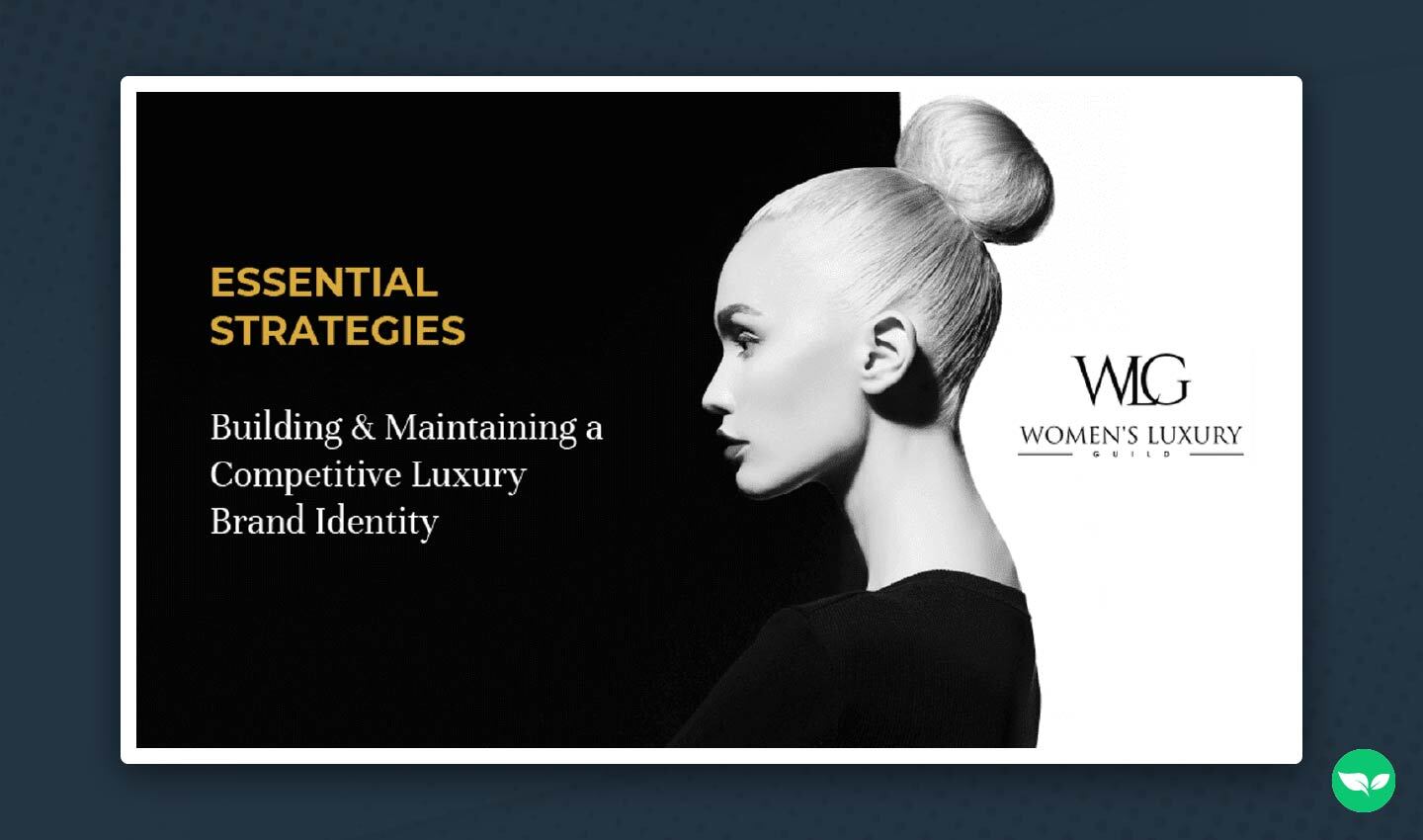
Her client screening process is just as intentional. Every new inquiry flows through a form on her site, with fields for budget, timeline, and project scope. She also researches clients in advance, and requires a discovery call, signed agreement, and deposit before any work begins.
On the product side, she’s started experimenting with digital goods — including Squarespace templates and pitch deck resources for startups that can’t yet afford custom work. There’s also coaching, behind-the-scenes content, and the occasional offer for designers trying to break into the B2B space.
Her biggest takeaway so far?
“You don’t need to scale to build a good business,” she said. “You just need to be known for solving one very specific problem — and doing it really well.”
Related:
- 50 Freelance Job Websites to Find Your Next Remote Gig
- How to Become a Freelance Web Designer in 7 Simple Steps
- 19 Profitable Digital Product Ideas to Sell Online
- How Emily Odio-Sutton Built a $560K Print on Demand Business

